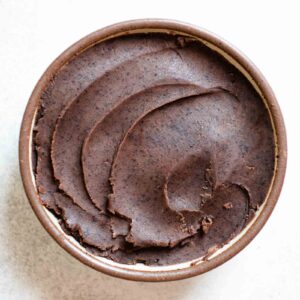Servings: 1.75 cups (485 to 500 grams)
Smooth Red Bean Paste
Red bean paste (豆沙) is a common filling used in Asian breads and pastries. Use it in mooncakes, my mung bean cakes, or as a filling in my pineapple buns! This recipe explains how to make a smooth red bean paste. See note 1 for directions on how to make a chunky red bean paste.
Ingredients
- 1/2 pound (225g) azuki/adzuki beans
- 6 cups (1.4L) water
- 4 tablespoons roasted walnut oil, (see note 2)
- 1/2 cup (100g) packed dark brown sugar, (see note 3 about adjusting sweetness)
- 1/2 teaspoon kansui, optional (see note 4)
- 2 tablespoons virgin or unrefined coconut oil, (see note 5)
Instructions
Cook the Beans (See Note 5 for Stovetop Directions)
- Rinse and drain the beans. Transfer the beans to the bowl of an Instant Pot. Add the water, seal the Instant Pot with the lid, and cook the beans on High Pressure for 22 minutes.
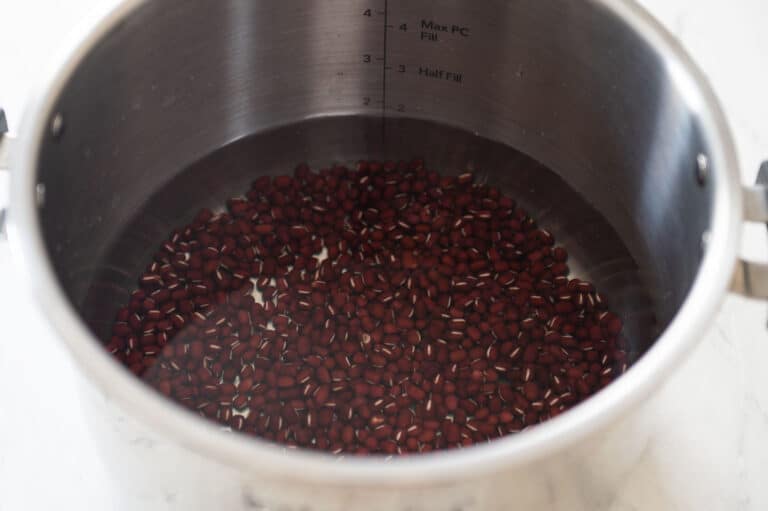
- Once the cooking stops, let the beans sit for another 25 minutes so they can soften further. Release any residual pressure by moving the pressure release to “Venting.” Drain the beans.
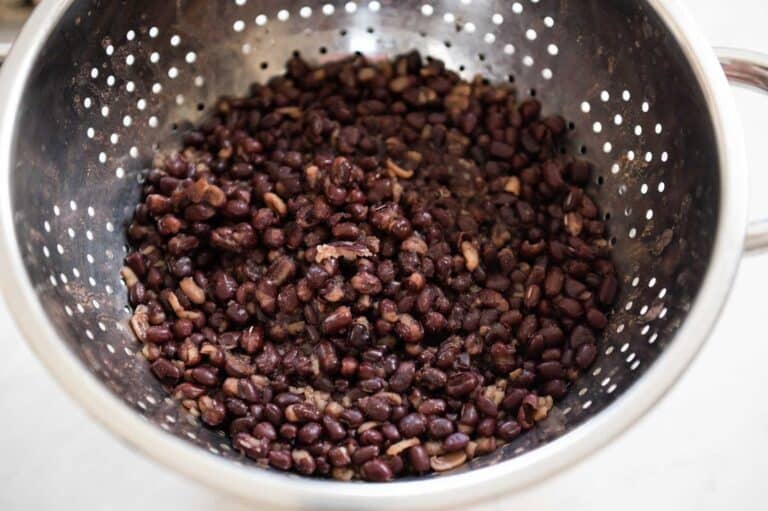
Press Beans
- Transfer the cooked beans to a food processor to blend until smooth. Because there isn’t enough liquid in the beans, they won’t mix properly in a high-speed blender.
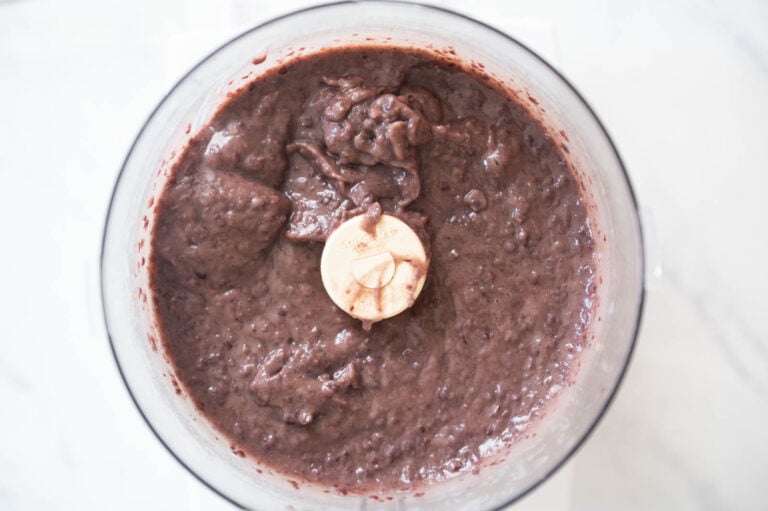
- Once you blend the beans, I recommend pressing the puree through a mesh strainer to strain out some of the tougher skins of the azuki beans. Straining isn’t absolutely necessary but highly recommended if you want a smoother paste. You can strain the puree twice if you like.
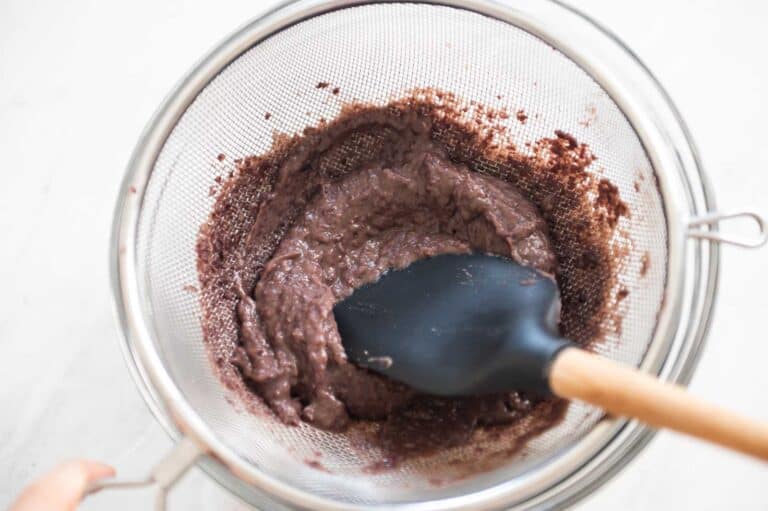
Finish Cooking Bean Paste
- Add the sugar to the pan and stir to combine with the beans. If you're using kansui, add it now, too. Reduce the heat to medium-low and continue cooking the paste for another 10 to 11 minutes. Eventually, the paste will thicken so much that you can fold up the paste with a flat spatula. The consistency of the paste will almost be like soft play-doh. Reduce the heat to low.
- Take a pea-sized portion of the paste and let it cool for 30 seconds before tasting. Add more sugar, if desired.
- Add the coconut oil to the pan. Use a flat spatula to fold the oil into the paste. Turn off the heat.

- Transfer the paste to a mixing bowl and let cool for 20 minutes before using. The red bean paste crusts easily, so cover the bowl with a damp towel.
- Refrigerate any unused red bean paste for up to a week. You can also freeze the paste in a freezer bag and use it within a few months. Make sure to remove as much air from the bag as possible before freezing.
Notes
- Chunky Red Bean Paste: If you want a chunky paste (i.e., a paste with bits of broken red beans), crush about 1/2 cup of beans and set it aside. Then, puree the remaining beans and press them through a strainer. Add the smooth bean puree as well as the crushed beans to the nonstick pan to finish cooking the bean paste.
- Oil Substitutions: You can substitute the walnut or coconut oil with any oil of your choice. If you want the bean paste to have a nutty aroma, peanut or toasted hazelnut oils are good substitutions for the walnut oil.
- Adjusting Sweetness: You can easily adjust the amount of sugar used in this bean paste to suit your taste. Depending on how you’re using the red bean paste, you may want less or more sugar. Feel free to reduce or add 1 to 2 tablespoons of sugar to this recipe.
- Kansui: My mom always adds a small amount of kansui (also known as lye water, 鹼水) to deepen the color of the red bean paste. Kansui also alters the taste of the paste ever so slightly. You can find kansui in Asian grocery stores. Feel free to leave it out if it’s difficult to obtain.
- Coconut Oil: I like to add more oil at the end so that the bean paste is nice and moist. In my original recipe, I added only 1 tablespoon of coconut oil at the end. I have bumped that up to 2 tablespoons to make the bean paste richer. Also, I prefer using coconut oil to give the bean paste another dimension of flavor. If you’d rather use only one type of oil for the bean paste, feel free to do so.
- Cook Beans on Stovetop: Rinse the beans and soak overnight. Drain the beans and transfer to a saucepan. Fill the saucepan with water until the water line is about 2 to 3 inches above the beans. Bring the water to boil. Reduce the heat to medium, and leave the lid slightly ajar to prevent the liquids from boiling over. Continue cooking the beans for another 45 minutes. Turn off the heat and leave the beans in the hot liquid for another 20 minutes. You want the beans to be very soft before blending into a puree. Drain the beans.
- Cooking Paste in Nonstick Pan: If you want cleanup to be easy, I highly recommend cooking down the paste in a nonstick pan. I used a Dutch oven during one of my test batches and a hard layer of bean puree coated the bottom of the pot. Similarly, I tried reducing the puree in the Instant Pot using the Sauté function once and the puree formed a crust at the bottom of the pot. It took a lot of soaking and Bar Keeper’s Friend to clean up the pots.
- Doubling the Recipe: If you want to cook a larger batch of red bean paste, double the amount of beans, sugar, walnut oil, and coconut oil. 10 cups of water should be plenty for cooking the beans in the Instant Pot. If you only have a shallow nonstick sauté pan to cook down the bean paste, I recommend splitting up the puree into two batches and cooking each separately. Trying to cook everything at once in a shallow pan can lead to a big mess.
Nutrition
Serving: 2tablespoons | Calories: 115kcal | Carbohydrates: 15.2g | Protein: 2.8g | Fat: 5.2g | Saturated Fat: 1.7g | Sodium: 4.3mg | Fiber: 1.8g | Sugar: 6.3g
Did you make this recipe?Tag @hellolisalin or leave a star rating and comment on the blog!
